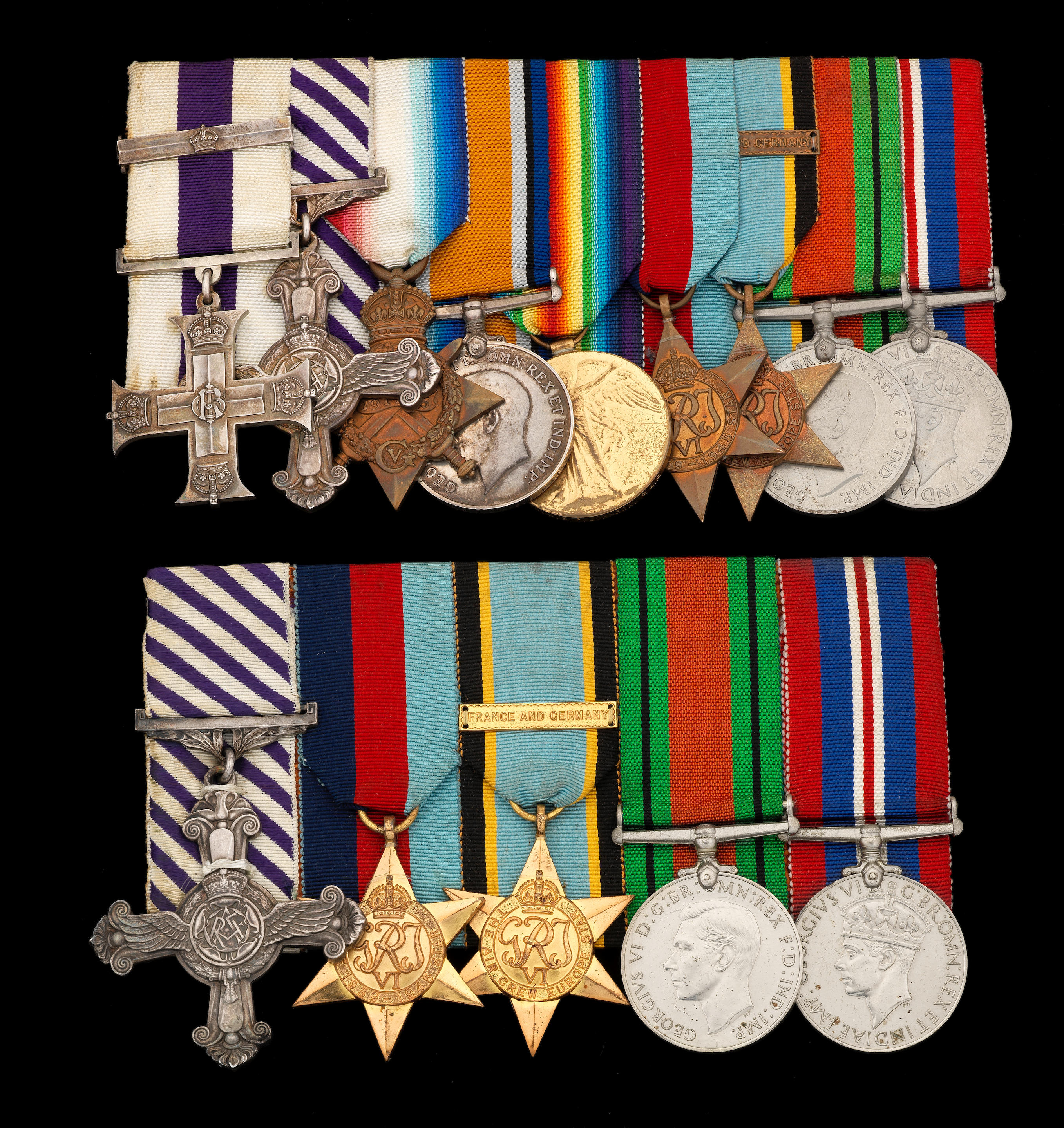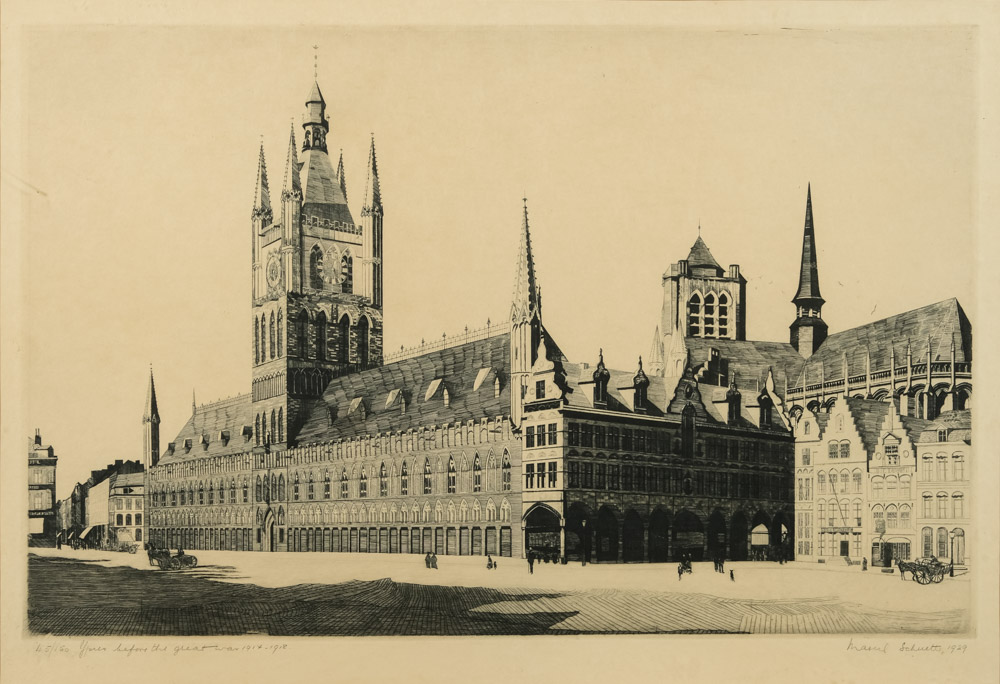A Great War 1917 ‘Ypres’ M.M. group of four awarded to Sapper G. Clark, 3rd Field Company, Australian Engineers, Australian Imperial Force, for saving the life of a wounded runner during operations at Polygon de Zonnebeke, 20 September 1917. He received a gun shot wound to the leg, 16 March 1918, which developed Tetanus Military Medal, G.V.R. (1996 Sapr. G. Clark. 3/F. Coy Aust: E.); 1914-15 Star (1996 Spr. C. Clark. 3/F. C. Eng. A.I.F.); British War and Victory Medals (1996 Spr. G. Clark. 3 F.C.E. A.I.F.) mounted for display, traces of verdigris to Star, pair with official corrections, generally very fine or better (4) £600-800 Footnote M.M. London Gazette 17 December 1917. The original recommendation states: ‘During the operations east of Ypres on 20th September 1917, this man was employed as a runner. He was continually going between advanced lines and Brigade Headquarters and in spite of heavy shelling delivered messages. On one occasion his fellow runner was badly wounded and Clark carried him on his shoulders until assistance was obtained when he delivered his messages, and returned alone through heavy shelling to the forward position.’ George Clark was born in Taranaki, New Zealand, in 1890. He enlisted in the Australian Imperial Force 7 September 1915. Clark disembarked at Egypt in January 1916, and embarked for France in S.S. Ballarat in March 1916. He served with the 3rd Field Company, Australian Engineers as part of the 1st Australian Division in the French theatre of war. Clark was awarded his M.M. for gallantry in connection with operations at Polygon de Zonnebeke, Ypres, 20 September 1917. He was subsequently tried by Court Martial, and also received a gun shot wound to the leg, 16 March 1918. The wound developed tetanus, and Clark became dangerously ill. He returned to Australia in H.T. Carpentaria in August 1918, and was discharged 18 November 1918. After the war Clark wrote to the authorities claiming that his M.M. had been lost at sea when the troopship Barunga was torpedoed, he also claimed that he had not been issued with his Great War campaign medals. From the extant official paperwork it would appear that the issuing authorities in Australia had tried to contact Clark a number of times after the war, but did not have the correct address for him. Their records listed that in 1919 Clark’s M.M. remained unclaimed and was put into storage - it was finally released to him in 1932. He successfully claimed his campaign medals for the first time in the same year.
A Great War 1917 ‘Ypres’ M.M. group of four awarded to Sapper G. Clark, 3rd Field Company, Australian Engineers, Australian Imperial Force, for saving the life of a wounded runner during operations at Polygon de Zonnebeke, 20 September 1917. He received a gun shot wound to the leg, 16 March 1918, which developed Tetanus Military Medal, G.V.R. (1996 Sapr. G. Clark. 3/F. Coy Aust: E.); 1914-15 Star (1996 Spr. C. Clark. 3/F. C. Eng. A.I.F.); British War and Victory Medals (1996 Spr. G. Clark. 3 F.C.E. A.I.F.) mounted for display, traces of verdigris to Star, pair with official corrections, generally very fine or better (4) £600-800 Footnote M.M. London Gazette 17 December 1917. The original recommendation states: ‘During the operations east of Ypres on 20th September 1917, this man was employed as a runner. He was continually going between advanced lines and Brigade Headquarters and in spite of heavy shelling delivered messages. On one occasion his fellow runner was badly wounded and Clark carried him on his shoulders until assistance was obtained when he delivered his messages, and returned alone through heavy shelling to the forward position.’ George Clark was born in Taranaki, New Zealand, in 1890. He enlisted in the Australian Imperial Force 7 September 1915. Clark disembarked at Egypt in January 1916, and embarked for France in S.S. Ballarat in March 1916. He served with the 3rd Field Company, Australian Engineers as part of the 1st Australian Division in the French theatre of war. Clark was awarded his M.M. for gallantry in connection with operations at Polygon de Zonnebeke, Ypres, 20 September 1917. He was subsequently tried by Court Martial, and also received a gun shot wound to the leg, 16 March 1918. The wound developed tetanus, and Clark became dangerously ill. He returned to Australia in H.T. Carpentaria in August 1918, and was discharged 18 November 1918. After the war Clark wrote to the authorities claiming that his M.M. had been lost at sea when the troopship Barunga was torpedoed, he also claimed that he had not been issued with his Great War campaign medals. From the extant official paperwork it would appear that the issuing authorities in Australia had tried to contact Clark a number of times after the war, but did not have the correct address for him. Their records listed that in 1919 Clark’s M.M. remained unclaimed and was put into storage - it was finally released to him in 1932. He successfully claimed his campaign medals for the first time in the same year.















Try LotSearch and its premium features for 7 days - without any costs!
Be notified automatically about new items in upcoming auctions.
Create an alert